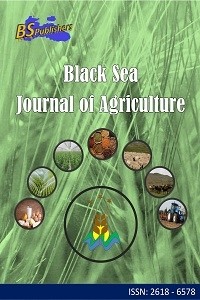
Black Sea Journal of Agriculture
Yazarlar: Mesut KARAMAN, Trefa KAMAL MOHAMMED AZİZE
Konular:Mühendislik, Ziraat
Anahtar Kelimeler:Acorn,Animal nutrition,Poultry,Ruminant animals
Özet: The aim of this review is to investigate the use of possibilities of oak acorn in diets of livestock. Dry oak acorn with high starch content was widely used to meet the requirements of livestock animal in the most parts of the world. Small part of fallen acorn is consumed by small ruminant animal such as sheep and goat, although most of fallen acorn are not collected and left in the field for deterioration. It is very important in terms of animal nutrition to make use of acorn obtained from 6.5 million hectares of oak forest in natural flora of Turkey. Recently high demands and cost of animal feedstuffs made it inevitable to make use of feedstuffs like acorn with high energy content. Chemical composition of acorn ranged from species to species. Generally crude protein content of acorn was low although tannin content was high. Acorn can be used to some extent in ruminant and poultry ration. High tannin and low protein contents are the main factors for inclusion of acorn into diets. Acorn supplemented diets should be supplemented with protein.